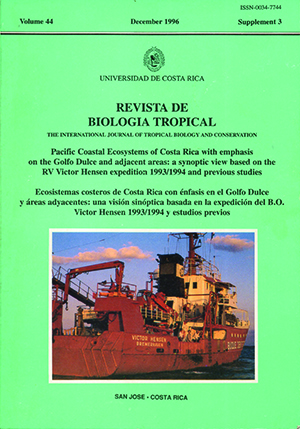Abstract
The waters and surface sediments of a 200 m deep tropical fjord were investigated with respect to chemical zonation, rates of respiratory processes. and benthic fluxes. Oxygen was found to ca. 100 m water depth. but only the upper pan of the oxycline was associated with the pycnocline. which was situated above the sill located at 60 m. Nitrate-rich water entered the bay at sill depth, and denitrification was indicated at anoxic depths. Hydrogen sulfide was only found in low concentrations near the bottom, and nitrate was a possible oxidant for the hydrogen sulfide. The observations reproduced those of a survey in 1969 to a large extent. This suggests that water exchange is frequent enough to prevent the development of strongly reducing conditions in the bottom water, High rates of dark oxygen uptake indicated intense carbon cycling within the euphotic zone. The rates decreased rapidly with depth, and at anoxic depths, rates of denitrification and sulfate reduction were more than 100-fold lower than the surface oxygen uptake. The chemical zonation as well as x-radiographs indicated that sediments underlying oxic bottom water were strongly irrigated and bioturbated while anoxic sediments were laminated and composed of turbidites. The rates of carbon oxidation were 5-10 times higher in the sediments underlying oxic bottom water than in those of the bottom of the basin. Sulfate reduction was a dominating process. accounting for about 50% and 100% of the carbon oxidation at the oxic and anoxic sites respectively. Even at the anoxic sites, hydrogen sulfide did not accumulate in the pore Waler and a high sedimentation of reactive iron phases is suggested as a contributing cause.##plugins.facebook.comentarios##

This work is licensed under a Creative Commons Attribution 4.0 International License.
Copyright (c) 1996 Revista de Biología Tropical


